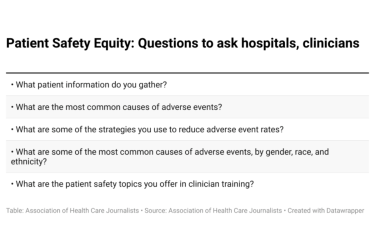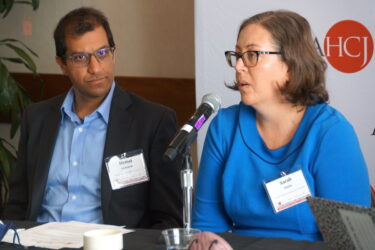
Amid wider changes being debated for the nation’s health care system, what is in store for communities seeking to narrow the health divide? That was the challenge discussed in recent National Academies of Medicine expert panel charged with studying how to improve health equity.
Their findings looked at how communities can close the equity gap by addressing social determinants of health. The report, “Communities in Action: Pathways to Health Equity,” also looked at how achieving health equity could in turn boost localities by helping to build vibrant communities, bolster societal ties and reduce costs.
“Health equity is fundamental to the idea of living a good life and building a vibrant society because of its practical, economic, and civic implications” the report said. “Promoting health equity could afford considerable economic, national security, social, and other benefits.”
At a recent meeting to present the findings, panelists discussed the challenges for community-driven health programs and how hospital systems, doctors and other care providers can improve efforts, according to Shannon Firth, Washington correspondent for MedPage Today. Firth cited these examples:
- Moving people into more stable housing in better areas that offer cleaner air and not just rely on providing inhalers and other asthma care.
- Address the stressors and social supports in a new mother’s life, as opposed to mainly focusing on statistics such as birth weight or the number of new mother visits.
- Establish more farmers’ markets to boost access to healthy foods.
- Encourage hospitals and providers be more pro-active in partnering with schools and community organizations, such as the YMCA.
- Boost group counseling and other outreach programs for vulnerable populations, such as new mothers.
The report also highlighted nine U.S. communities that have taken steps to address health equity: Boston, Buffalo, Harlem, Indianapolis, Los Angeles, Minneapolis, Oakland, San Antonio and Mound Bayou, Mississippi.
Although the report admitted that many of these initiatives were not new, “the committee emphasized that the goal of the report was not to encourage direct replication of these models, but rather chose the programs as “proof of concept,” wrote Firth, who covered the January meeting.
Panelists also offered a range of recommendations for payment reforms that factor in social risk and investment in schools. For providers, the panel urged partnerships that have long-term goals to “build healthier neighborhoods, expand access to housing, drive economic development, and advance other upstream initiatives aimed at eradicating the root causes of poor health, especially in low-income communities.”
“Anchor institutions (such as universities, hospitals, and businesses) should make expanding opportunities in their community a strategic priority,” they said.
Here are more of the panel’s findings and recommendations.









